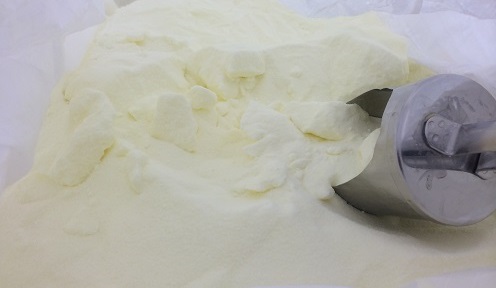Lactose Caking
PROJECT IS COMPLETED
Period: 2015 - 2017
A new industrial codex for lactose is under development and this new standard will increase the quality requirements of lactose. Lactose caking is a serious problem in the industry as it has a negative impact on product manufacturability, quality and shelf life.
Lactose, the principal sugar of most mammalian milks, is used as a crystalline powder, e.g. in the manufacture of infant formula. The production of lactose is facing a sevenfold increase due to demand from emerging countries.
The appearance of lumps of various sizes in lactose powder, referred to as lactose caking, is characterised by the formation of solid bridges between particles due to humidity, temperature variations, pressure and migration of fine particles. The diversity of causes makes a strict definition for caking difficult to formulate.
The overall objective of the project is to characterise and understand, and thus predict and prevent, caking in commercial lactose powder.
The underlying hypothesis of this PhD project is that the caking of commercial crystalline lactose is related to the mobilisation and recrystallisation of lactose through its interaction with water.
Detailed knowledge of lactose and how it is affected by relevant production and storage conditions (e.g. temperature, humidity and pressure) and product parameters (e.g. surface properties, granular size, impurities) could help to prevent the physical destabilisation of the product, and later this could be implemented in an industrial context.
A new validated method to predict caking in lactose powder, which can be used as a quality control parameter at lactose production sites, will be developed.
Funded by:
Project: Lactose Caking
Period: April 2015 - March 2017
Grant donor: The Danish Agency for Science & Technology and Innovation
FOOD grant: DKK 360,000
Total grant: DKK 2,171,500
Contact
 Melanie Anne Carpin
Melanie Anne Carpin
PhD Student
Ingredient and Dairy Technology
